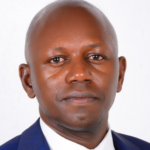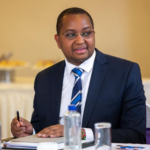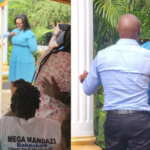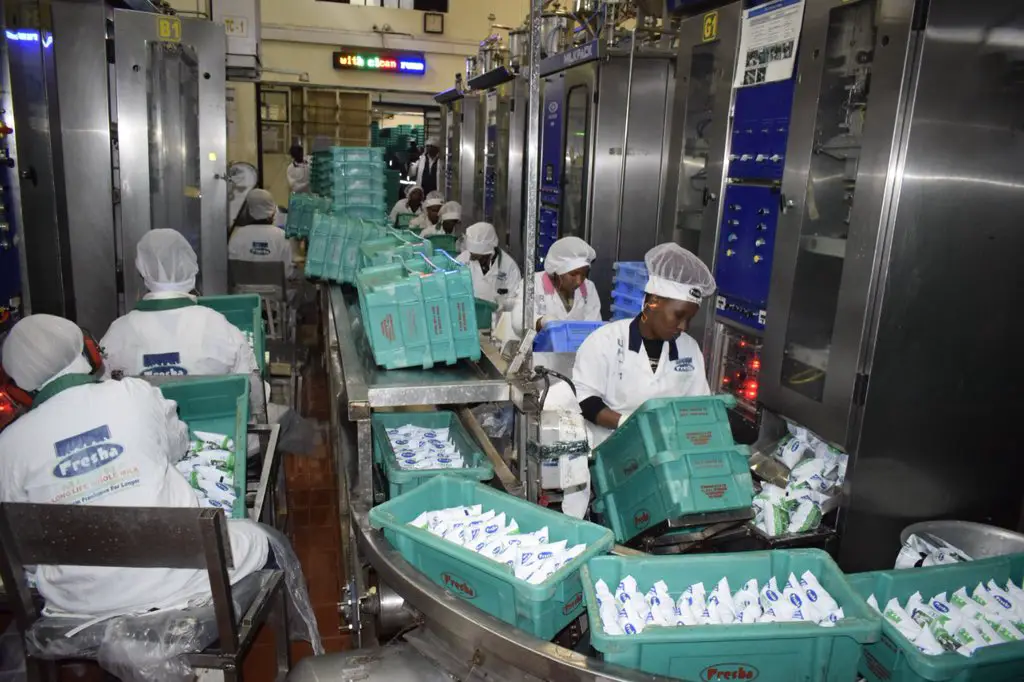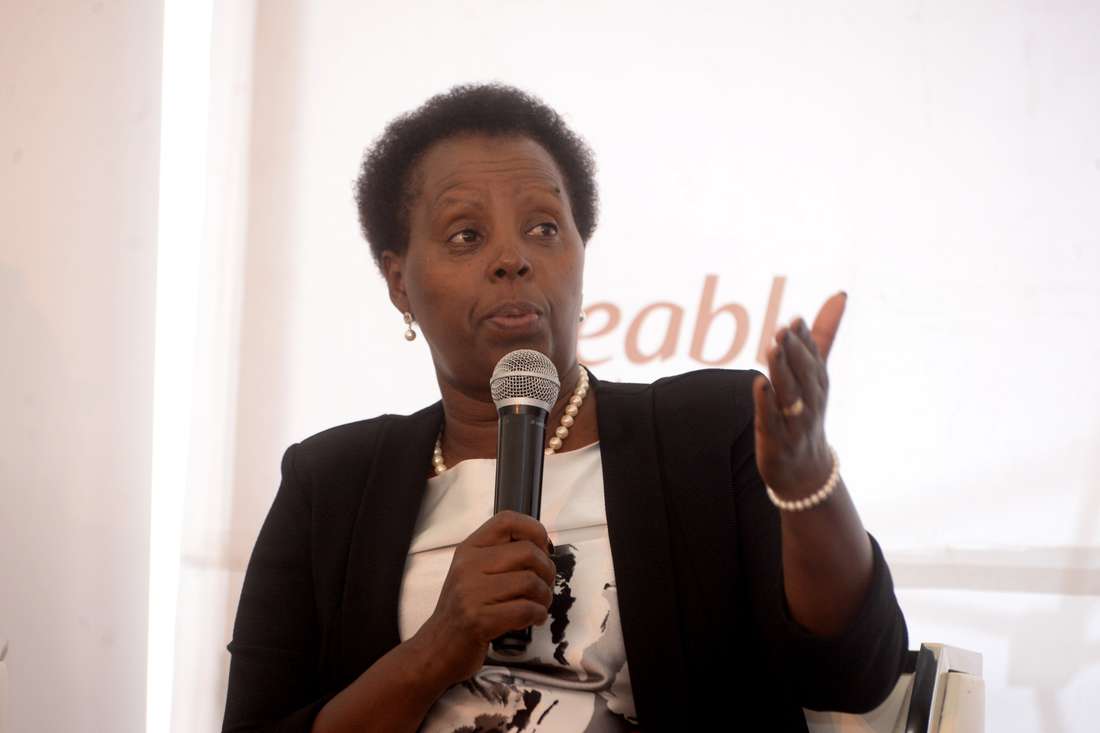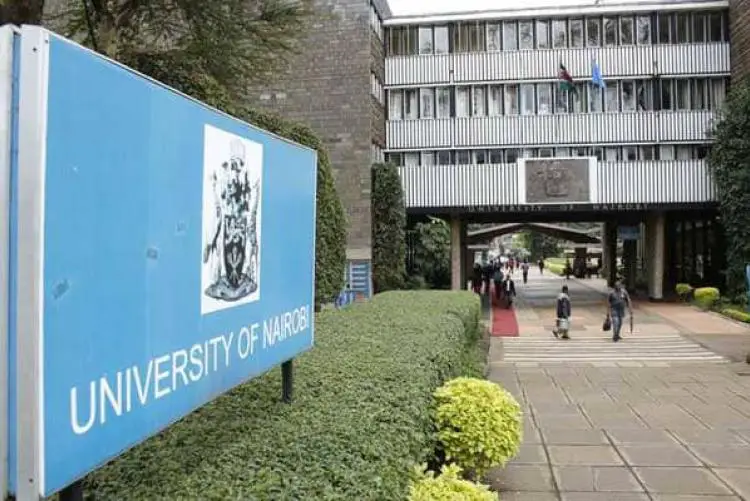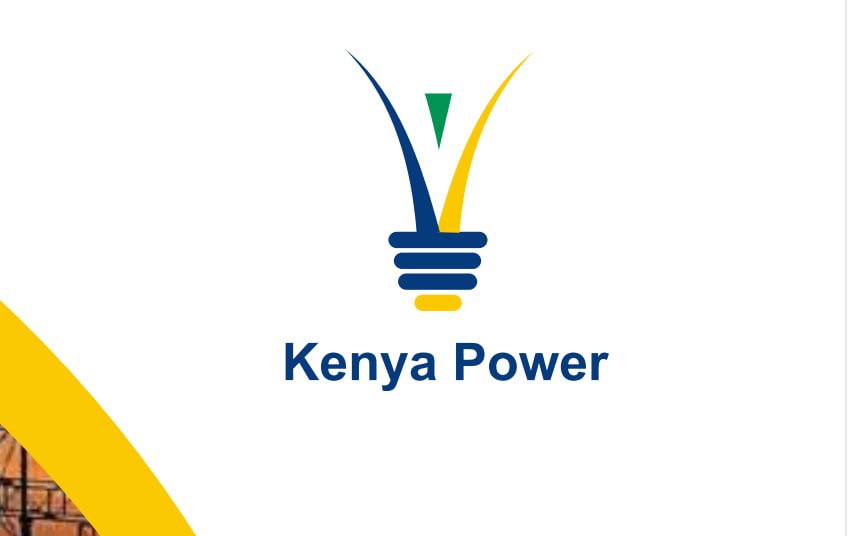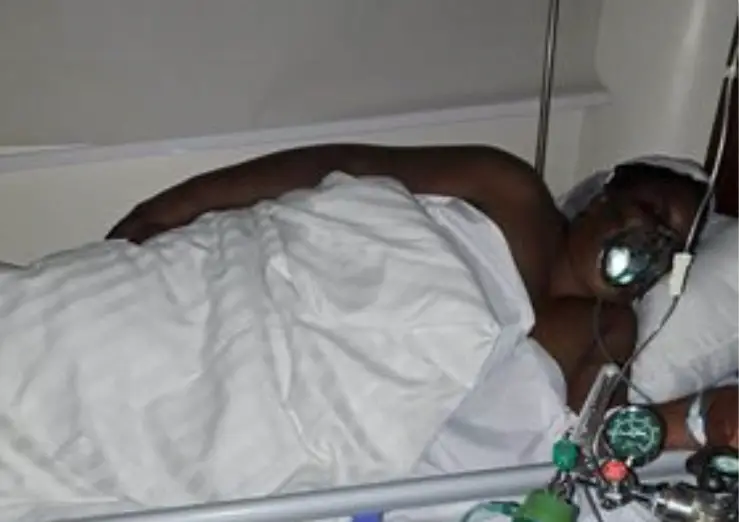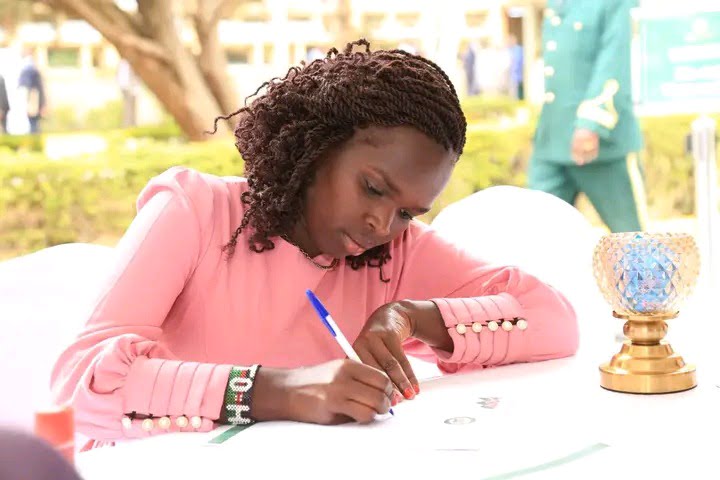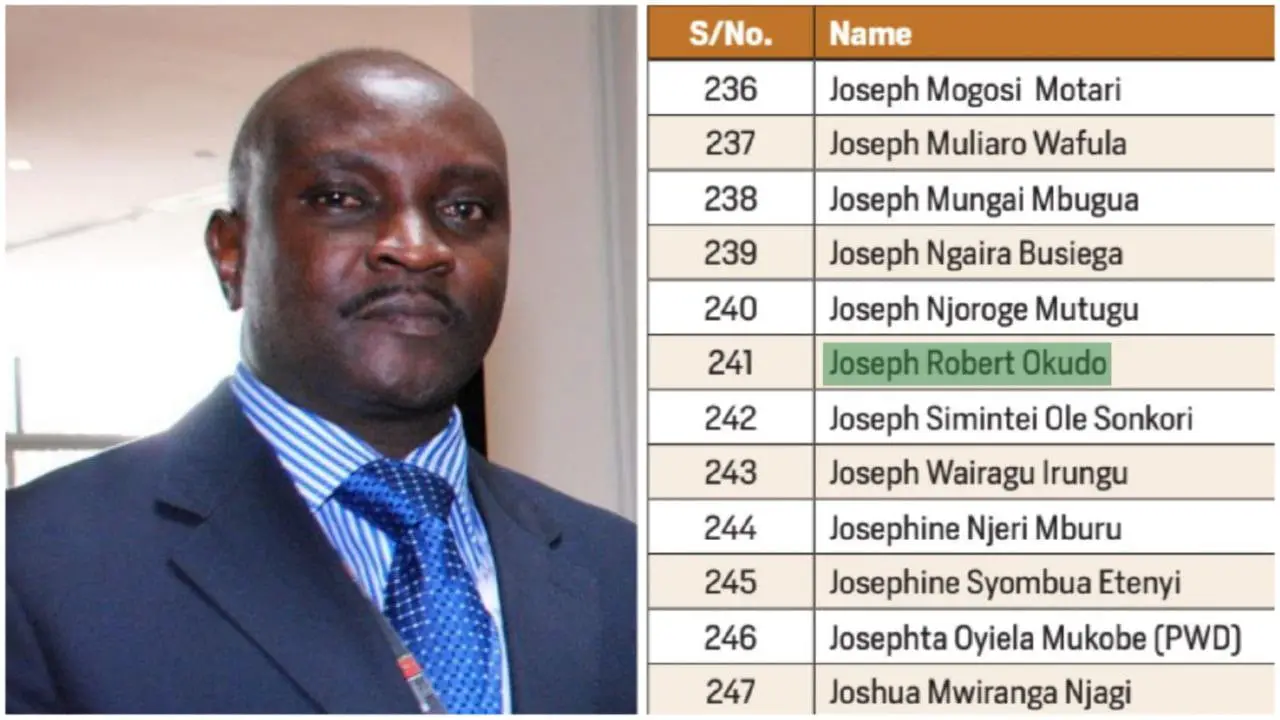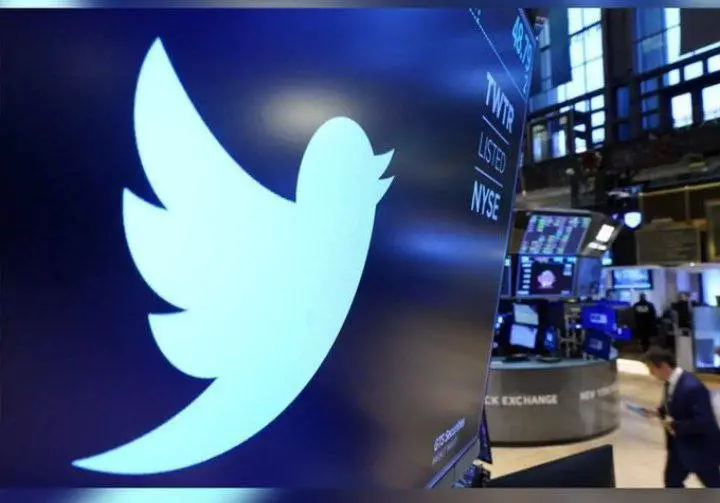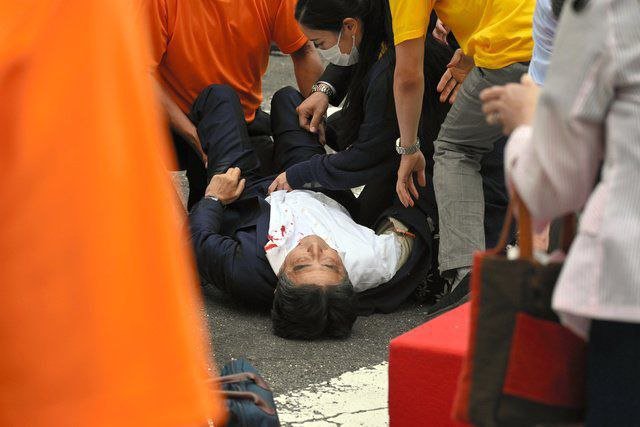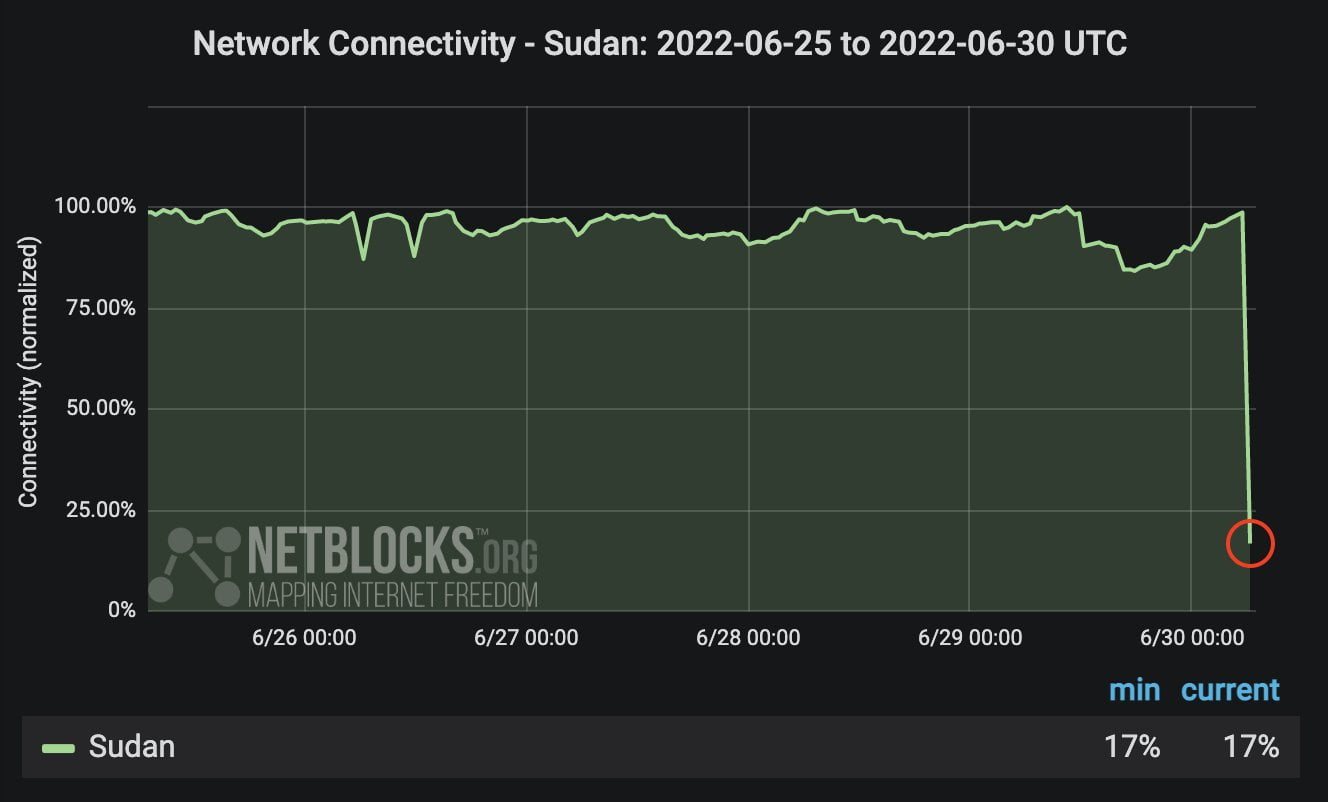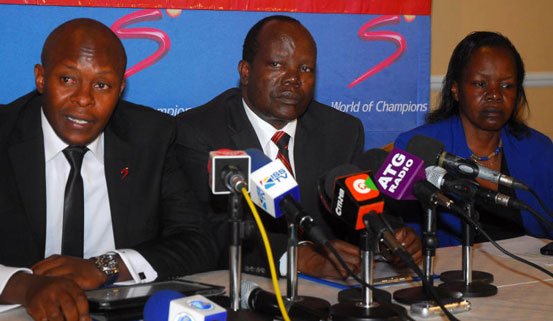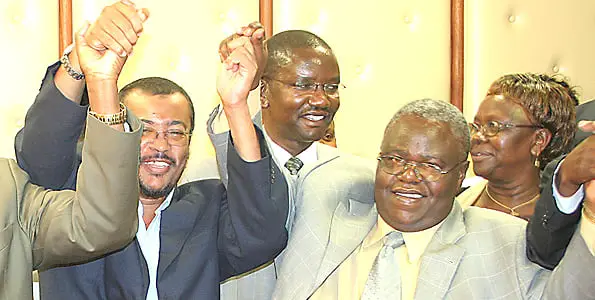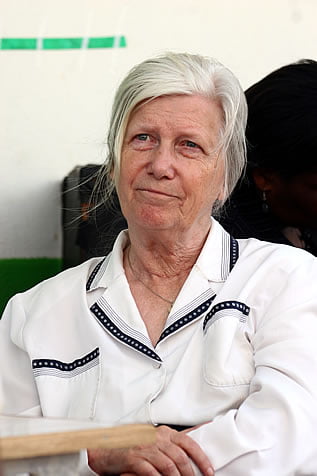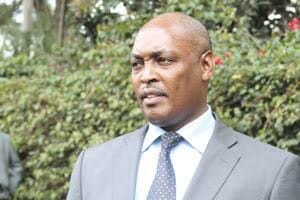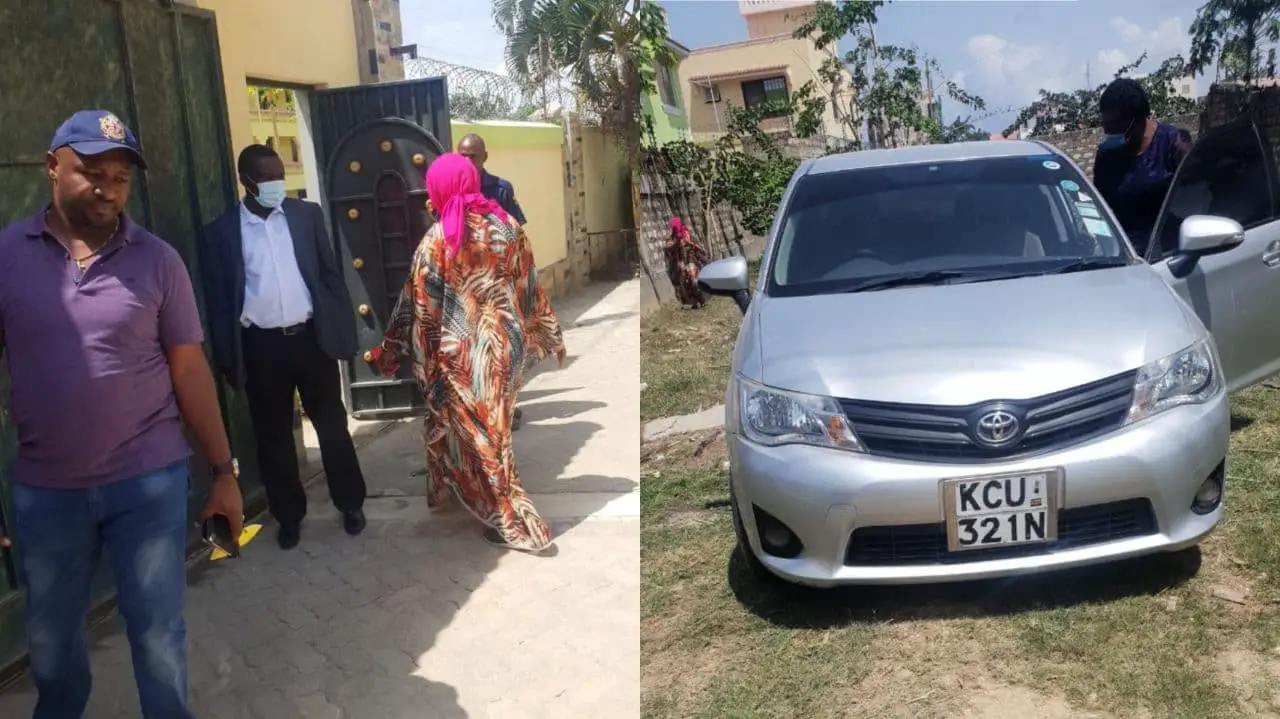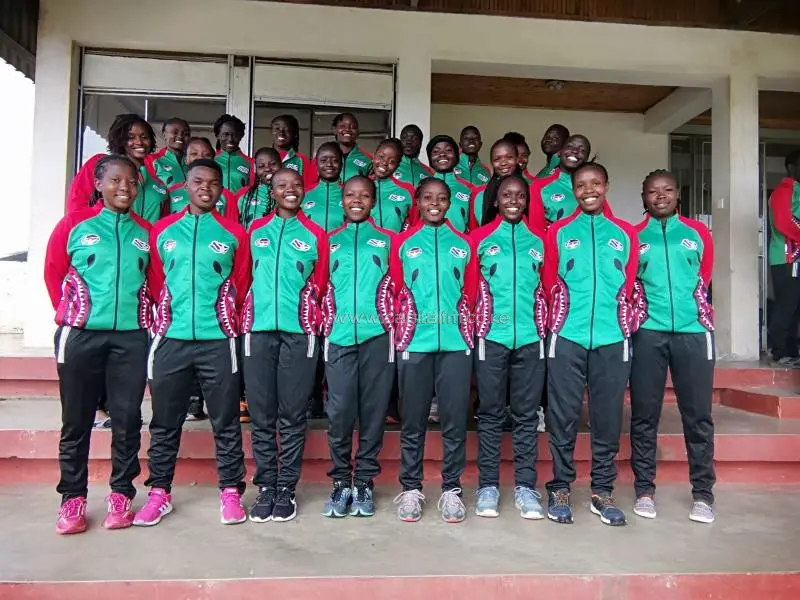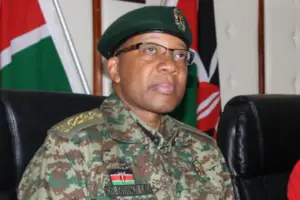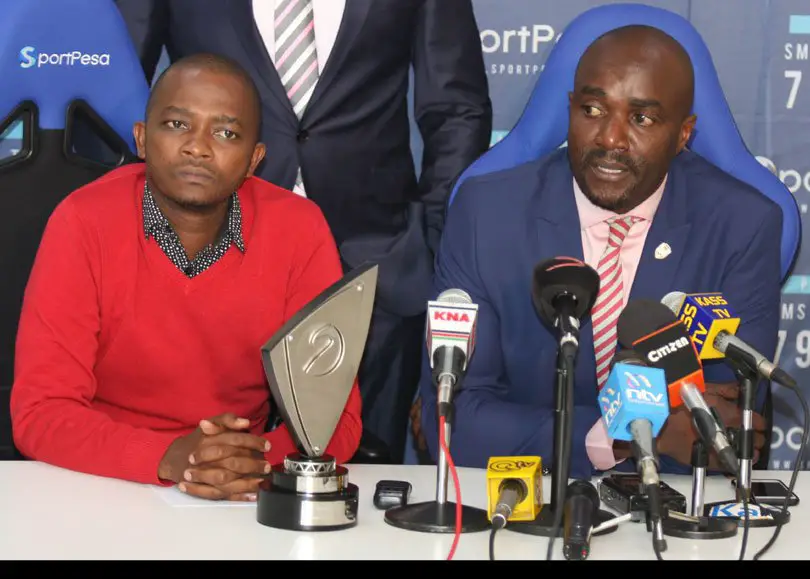 Caption: FKF President Nick Mwendwa (Left) and KPL CEO Jack Oguda.
Caption: FKF President Nick Mwendwa (Left) and KPL CEO Jack Oguda.
This week, the nice people at Nation Media Group did an expose on the financial statements of the top league in Kenya plus its budgets for 2017. As expected, the statements confirmed our worst fears, of institutionalized looting and robbery of sponsor funds that have denied football the high pedigree expected and in so doing, kept the National football team away from qualifying for any meaningful international competition.
Where did the rain really start beating us? We look at the key milestones that have got football where it is right now, down in the doldrums.
By 2007 when Kenya Premier League (KPL) signed the 2nd ever broadcast deal for local football with pan African broadcaster Supersport, it represented Kenyas’ spring of hope from years of despondency and rabid mismanagement. EPL crazy Kenyans were certain that with the injection of much needed funds and a continental platform, the local game was poised for a quantum leap.
The level of hope and enthusiasm in the local game was such that, none other than the high priestess of local media – Caroline Mutoko – and her coterie of groupies like Carol Radull were drawn into a get-in-the stadium campaign whilst supporting Sofapaka FC, commonly referred to as “Batoto Ba Mungu”.
KPL was a product of anger and fatigue at the maladministration of football by successive regimes at Kenya Football Federation (KFF). It appeared that KFF was intent on a suicide mission, happily taking its member clubs with it.
From 1984 – 1988 when football was under the stewardship of politician and Chairman Job Omino, he of the “coaches come and go” fame and who single-handedly destroyed Kenyas first ever but short-lived professional club- Volcano United FC. This outfit appeared ready, by raiding them for players, to sound the death knell for traditional community powerhouses Gor Mahia and AFC Leopards. Omino, a believer in tribal hegemony in football especially for his political ambitions would not let this happen.
During his 2nd tour of duty 1993 – 1996, Omino ominously was the root cause, because of his political inclinations, of the withdrawal of Kenya’s hosting of the 1996 African Cup of Nations (CAN). Then President Moi was convinced by his cabal of praise singers that to host the event in Kenya whilst Omino was Chairman of KFF would score him (Omino) too many political points in a country that was restive and clamoring for political emancipation.
Peter Kenneth and his rabidly kleptomaniac Secretary General Samson Nyamweya came next, soon thereafter, and managed to decapitate a magnificent broadcast deal by Kenya Breweries Ltd that aired the Kenya Super League on National Broadcaster – VOK (precursor to the current KBC). This was the first ever broadcast deal and harbinger of radical change in the way that football was consumed by Kenyans. By this time, EPL football was but a distant rumor with little or no impact on Kenyans.
Without the knowledge of Chairman Peter Kenneth, Nyamweya convinced a certain senior military officer and a certain KBL employee, both of whom were bank account signatories, to withdraw significant amounts of money from the KBL-broadcast account, under the pretext of “loaning” it for the National team (Harambee Stars). With the spectacular performance of the HS against Nigerian Super Eagles in early 1997, this team represented the holy grail of Kenyan football and as such, the requests for advances were never denied.
Needless to say, these funds ended up in the pockets of the loathsome Nyamweya and when there was no money to pay broadcaster VOK, the entire deal came a cropper. Peter Kenneth, though Chairman and extremely livid at this turn of events could do absolutely nothing. Nyamweya was too powerful within the ruling party KANU and had very strong political allies all the way to President Moi.
Football therefore, took one in the balls for team!
CAPTION: Sam Nyamweya (middle) the rabidly kleptomaniac football official, credited with killing football in Kenya.
In 2000, and riding on the back of successful youth football competition sponsored by Global blue chip Coca-Cola, Maina Kariuki (himself a senior executive at Coca-Cola) assumed the helm of KFF, promising to bring institutional changes and corporate professionalism akin to that practiced at the soda giant –Coke.
Within a short while however, he was forced to orchestrate the departure of his treasurer Levi Obondo over pilferage of sponsorship funds. Maina Kariuki, constantly busy and travelling all over the World on behalf of his employer assumed that he could run KFF in the same way he run affairs at Coke. He would pre-sign several blank cheques (some to draw cash) and leave them in the hands of his treasurer. Big mistake.
The departure of Obondo opened the door for another nefarious character in this tragic play by the name Mohammed Hatimy, who would become either hero or villain during the long battle years between 2003 – 2011.
By this time (2003) the clubs in the elite league were certain that none of the people elected to high office in the KFF were interested in their growth and expansion. Most simply wished to raid the coffers of the Federation for FIFA and sponsor funds, amass whatever political capital they could to run for public office, and disappear without a thought as to the anarchy they left behind.
CAPTION: Advisor and chief-strategist to Mombasa Governor Ali Hassan Joho is Mohammed Hatimy (left) who was a tragedy to Kenyan football.
This is where the tragicomic story of the KPL begins, a sordid tale of hope, despair, nepotism, tribalism, betrayal and to cap it all off, transmogrification and metamorphosis into the same much maligned characters who inspired the revolution in the first place.
The one person within the club football fraternity and who had been around long enough to witness the desolation left behind by these successive Federation officials was also the founder of an amazing concept –Mathare Youth Sports Association (MYSA). This former civil servant in the Canadian Government had settled in Kenya circa 1986, his name Robert Donald Munro or simply Bob Munro to friend and foe.
He established, within the poverty of the Mathare slums in Nairobi, an organization that combined football and social service to build the character of the seriously underprivileged boys and girls. In so doing, and as an advocate of these underprivileged youth he had to deal with KFF officials on a daily basis. He therefore bore witness to the savage greed and ambivalence of KFF officials to the desperate plight of players, referees, coaches and fans.
Still, he soldiered on with his project, able to convince several donor organizations and Governments to invest in his project. The kids who were 10 years old and were involved in the program from the onset, were in their early to mid-twenties when the battle for the soul of football began.
One such youngster was Jack Oguda, current KPL CEO and former striker for Mathare United FC. This extremely shy but sly young man had been there since the formation of MYSA, had played through the age-grade ranks, participated in youth activities and coaching before rising to Team Manager of Mathare United.
Bob Munro was therefore the man, who in 2003 reached out to other clubs in the then Super League and invited them to a series of meetings at Utalii Hotel to discuss their seriously jeopardized future. The byword for the ensuing actions by these clubs was TRANSPARENCY. Notably, KFF was expected to publish and circulate its latest audited accounts to its member clubs. This would become a major sticking point in the tumultuous years that lay ahead.
CAPTION: Highly decorated Bob Munro (left) is a darling of international media and was feted by journalists under the umbrella of Play The Game.
What Bob Munro lacked in creativity he made up for with dogged determination and impeccable record keeping. By continuously and unrelentingly harping on about transparency and audited accounts he knew that he seriously disarmed the KFF regimes, which he was sure had no intention of displaying to the World how badly they had mismanaged funds from sponsors and FIFA.
When these clubs resigned from KFF and formed a new league, the fight took a new vector, one that KFF could hardly ignore and neither could African governing body CAF and World body FIFA. The defection of the clubs from the KFF League coincided with an ultimatum and subsequent disbandment of the KFF by Sports Minister Francis Nyenze following the looting of the gate collections from as many as 5 internationals, amounting to in excess of kes. 30 million. When Maina’s tenure ended and he quietly disappeared, it was a case of good riddance to extremely filthy rubbish.
2004 saw new elections that saw former AFC Leopards Chairman cum politician Alfred Sambu take over the helm at KFF, everyone was happy to see the back of Maina Kariuki. From the get-go, Sambu was sympathetic to the plight of the clubs, he himself having been the Chairman of one of the top community clubs – AFC Leopards. Key was the insistence by clubs that their caucus be converted into a recognized limited liability company with a constitutional mandate to own and manage the elite league.
This borrowed heavily from the now popular English Premier League or the Australian A-League whose similar structure had allowed for amazing commercial deals to be entered into by clubs directly. Sambu thought this was a particularly good idea.
However, inside KFF there was serious opposition to this proposal, which was fronted by Titus Kasuve and the diminutive Mohamed Hatimy. To gain the political support needed within the new ruling coalition Government, these two drew to their side the colorless on-off Gor Mahia Chairman Erastus Okul. This tripartite, by calling an AGM in Nakuru, ejected Sambu and filed their office with the registrar of societies and FIFA, thereby becoming officially recognized.
Sambu, upstaged by his juniors within KFF and in a desperate attempt to keep himself in the swim, did an awkward about-face and became the main protagonist against the clubs. He managed to broker a deal with FIFA that he continued as the recognized KFF Chairman, but he could no longer be in bed with the Munro group.
By 2006, Sambu allowed the running of the affairs of KFF to rest with the Kasuve-Hatimy group while he busied himself with what was really important to him, the running for the Parliamentary seat in his rural home during the 2007 elections. Truly, he had used football as a veritable stepping stone to high political office.
The clubs, now vindicated that their initial reasons for waging war against the new office were justified, escalated it by withdrawing their participation in the KFF Cup competition and instead launching their own, aptly named – TRANSPARENCY CUP- which came fully stocked with an unprecedented 750,000/- prize money by one of the top NGOs in the country.
Clearly, financial transparency, probity and accountability were high on the agenda at the time.
Bob Munro was the high priest of these new breeds of clubs, visionary and willing to lay it all on the line for a chance at a much better future. These clubs, whose sponsors were equally tired of the financial malaise in KFF and therefore silently supported their clubs by continuing to fund their clubs.
FIFA attempted at least 6 rescue interventions of the basket case Kenyan situation. They sent the now disgraced Nigerian Dr. Amos Adamu, The “Iron Duke” Irvin Khoza from South Africa, they created a normalization committee, held joint talks headed by NOCK Chairman and legend Kipchoge Keino. Meetings were held during FIFA Congresses in Cairo and Marrakech where a raft of agreements were written, some supposedly on hotel paper napkins. CAPTION: Irvin Khoza of the PSL in South Africa had also been topped in to seek a lasting solution to Kenyan football.
CAPTION: Irvin Khoza of the PSL in South Africa had also been topped in to seek a lasting solution to Kenyan football.
In all this, the Kenyan clubs stood resolute on the need for them to be allowed to form a limited liability company and for audited books of accounts for the KFF to be circulated. FIFA realized that the clubs had the high ground in this battle and their normal sanction or suspensions of Kenyan football appeared not to bother these clubs. The clubs had sponsor resources, they had access to stadiums, they had their own league and cup competition but most importantly they had the goodwill of the Kenyan people.
Victory was almost assured, however and as always happens, the weaknesses come from within. In trying to implement an agreed relegation formula that would have seen the league reduce from 20 teams to 16 teams, invariably saw the automatic relegation of Shabana FC whose Chairman SAMSON NYAMWEYA was a close Munro friend and confidante. It was rumored that Bob Munro wielded ‘white magic’ that enabled him to exert extreme control over Nyamweya such that the very fickle Nyamweya would fund Munro’s activities.
Bob Munro stuck to his guns on the implementation of the relegation formula, meaning that Shabana would from the very next season be playing in the lower Nationwide League. Nyamweya, who had wrestled this club from the legend Dogo Khan in Kisii would not allow this to happen, not when he was the one holding the ball.
Nyamweya exerted his enormous influence in Government using his close ties with former VP George Saitoti to intimidate Government owned clubs into join a parallel league he had created alongside the other relegated clubs. CEOs of companies like Chemelil Sugar FC, Agro-Chemicals FC, Sony Sugar, KCB FC, Mumias Sugar FC and military sides Ulinzi FC and Administration Police, would get calls from nondescript flunkies of the Sports Ministry, reminding them of their allegiance to Government. AFC Leopards and Gor Mahia FC were also coerced to join the parallel league.
Former Mumias Sugar CEO and current Nairobi Governor Evans Kidero was so incensed by getting calls from Government functionaries about his football club that in one fell swoop, he disbanded the club.
Access to Stadium was equally limited when calls were made to Municipal councils asking them not to allow the KPL clubs to play there. The KPL clubs resorted to playing back-to-back return leg fixtures to keep the momentum going.
Nyamweya decided then to cut the head off the snake once and for all. By bullying and cajoling Sports Minister Maina Kamanda and preying on the residual anti-colonial and anti-mzungu feelings that seem to thrive within members of the Kikuyu community, he arranged for Bob Munro to be deported for anti-Government activities. So Bob Munro was picked up by 4 Administration police officers and 2 immigration officials from his house office and taken to Nyayo House for processing, in the back of a Government Landrover!
This was no longer a game, Bob Munro now already advancing in years was going back to Canada, to start life all over again.
His wife Ingrid, a crusader for underprivileged children and former diplomat, made some desperate calls and pulled strings within her networks and diplomatic contacts, these calls managed to land her prostrate and sobbing in front of the wife of the then most powerful man in Kenya, the late Cabinet Minister John Michuki.
Mrs. Michuki, it is rumored, took her by the hand and went with her to see her husband. John Michuki could see the determination in his wife’s eyes and knew that if he didn’t intervene, there would be no peace for him at home. He, therefore, placed a call to Sports Minister Maina Kamanda and ordered him in vernacular to ‘stop this business once and for all’.
Bob Munro had received his Hail Mary, a reprieve for the ages.
CAPTION: Ingrid Munro, wife of Bob Munro save him from deportation through her close links to the then wife of powerful minister John Michuki.
FIFA continued with it usual modus operandi of suspending Kenya from all football activity and while simultaneously using diplomacy to set up a process for the unification of the leagues. It was agreed that the Kenyan league merge but have the 2 separate leagues continue as 2 pools of the same league under the management of the KPL. At the end of the season, the top 2 in each pool would playoff for the Championship and the bottom 4 would be relegated.
FIFA had allowed an amendment to the KFF Statutes for the inclusion of limited liability Company to run and manage the league. The very sly Titus Kasuve, Mohammed Hatimy and Erastus Okul instead went ahead and incorporated a company which was allowed by an AGM in Malindi to take over the affairs of KFF.
Samson Nyamweya, equally sly and wily, called an AGM of the KFF in Nairobi simultaneously and took it over as the Chairman. This kick-started another round of fights that went all the way to the Court of Arbitration in Sports in Lausanne, Switzerland. It would seem that in their hurry to create a limited company and effectively own Kenyan football, Kasuve, Hatimy and Okul had forgotten to wind up KFF, which was the body duly recognized by Government to handle football affairs.
It was during the infamous Malindi AGM that KPL was formally recognized and allowed to run the top league in Kenya. The AGM also resolved (in the presence of FIFA) to ban Samson Nyawmeya from all football activities, for life.
A year later in late 2007, KPL formally entered into a broadcast deal with Supersport. This marked the beginning of the great betrayal, principal was vacated and falsehoods allowed to carry the day.
The signs had been there all along, the Kasuve-Hatimy-Okul triumvirate (now called Football Kenya Limited –FKL) had attempted to show other clubs that rules meant differently to Bob Munro. These clubs, at the time high on the adrenalin of self-righteousness could not see beyond the angelic façade worn deliberately by Bob Munro. For instance, they brought up the issue of why MYSA would front 2 teams in the top league (MYSA Youth and Mathare United) when the rules were very clear that no organization could do so. Everyone who knew the history of MYSA knew that in this instance, FKL were speaking truth, but no one really wanted to bother with this inconvenient truth.
Bob Munro had over the years developed a means of justifying injustice, if such an injustice was going to benefit the ‘beleaguered youth of Mathare’. He would indeed justify murder if the beneficiary was going to be someone from the MYSA system. In the case above he attempted to draw a distinction between MYSA Youth as an independent organization managed by the youth of Mathare while MU was a professional club owned by him. The small matter that he sat on the board of MYSA and was a mandatory signatory of all its accounts, was a small detail to be glossed over. So too was the fact that MYSA would continuously lend MU monies for league engagements, salaries. So much for the separation and distinction!
Of serious concern to FKL was that at any one time, Bob Munro had 2 votes within the KPL and at the AGM of the FKL, obviously giving Bob an undue advantage.
Another example narrated by former Secretary General of KFF-Sammy Obingo was how in the 90s, KFF had a budding relationship with Dutch football Federation – KNVB- for the technical exposure of Kenyan coaches. Bob Munro, at that time invited to help in the drafting of the rules of Kenyan football became privy to this information, consistently depicted KFF as a pit of corruption and den of thieves (yet he happily acquiesced to sitting on their various committees) and instead fronted MYSA. Astonishingly, the Dutch accepted this somehow, and thereafter slots that were meant for qualified Kenyan youth coaches benefited MYSA youth only. Many other Kenyan coaches were robbed off this opportunity to advance their skill level, which has led to the current dearth of coaching talent in Kenya.
Today, the sole beneficiaries of this program are from MYSA namely Francis Kimanzi (UEFA A), Gabriel Njoroge (UEFA B), David Ouma (UEFA B), Salim Hassan (UEFA B) and the late Peter Serry (UEFA B). None of these coaches has seriously ventured out of the MYSA system, and the benefits of what should be a National program have been localized by rabid shortsightedness.
The most damning indictment of Bob Munro, as a member of the “Kenya Cowboys” group of whites living in the country is the belief in tribal stereotypes.
Time and again, he has shown his derision for members of the Kikuyu community despite his having adopted some Kikuyu kids from a former street family. We can only speculate as to the reason he harbors these feeling. Maybe it has something to do with the circumstances surrounding his wife’s loss of the controlling interest in what is today Jamii Bora bank of which she was a founder to a group of Kikuyu co-founders with whom she differed on the strategic direction to take the organisation. Obviously, considering where Jamii Bora Bank is today would vindicate the latters decision.
Maybe the Kikuyu have an uncanny lack of supplication (as evidenced by Former Minister Maina Kamanda) to white superiority and authority from the days of the struggle for independence.
Whatever the justification for his feelings towards members of this community, does not justify the mistreatment of the Kikuyu in his own MYSA. He treated David Njoroge (a former MYSA graduate and UN staffer) atrociously when he drafted him as CEO of the organisation, whilst he was between jobs. Similarly, the treatment of Sam Mwai (Former CEO of the SSMB) when he was drafted to a similar position after he was shown the door by Sports Minister Helen Sambili, would leave a dreadful taste in the mouth of any right thinking Kenyan.
Most inexcusable however, was the extremely shabby treatment of longtime senior journalist and KPL employee – Gichinga Njoroge. He was singled out for the most humiliating and debasing treatment where all the hate, tribal angst and frustration that Bob Munro could muster was used to eject him from a job.
Gichinga was employed to manage the news and content generation for the 16-team league and to update the website. He also sent news to all the mainstream newspapers, he knew his job especially because he had been a member of the elite sports editorial team at the Nation newspaper for years.
Bob Munro decided that time had come to give former MYSA graduate & KPL CEO Jack Oguda an upwards salary adjustment. However, it would appear odd to do a salary review for a single employee and murmurs of it would probably reach others. He decided to sacrifice Gichinga Njoroge and to divert his salary to double whatever Jack Oguda was earning at the time.
Bob convened a meeting of the Executive committee of the KPL where a decision was made to let Gichinga go immediately. The task of informing Gichinga that his employment had been terminated was left to the beneficiary of his departure – Jack Oguda!
Being a conscientious human being, not used to this kind of raw savagery, Jack Oguda was unable to bring himself to inform Gichinga of the decision. So, Gichinga continued to come to work as usual, he was paid his salary the first month after his purported sacking, but when the payroll was done for the 2nd month, the Chairman of the Finance committee – George ‘Nyundo’ Odhiambo (KCB FC) – refused to sign off on Gichinga’s payment.
When Gichinga discovered that no money had hit his account, which was odd, and the rest assured him that their monies had come through, he went to enquire from accounts. The accountant asked him to go and speak to the CEO which was already a huge red flag. When he got to the CEOs office, the eyes said it all and the words simply confirmed it.
To balance out equations and in the process appear not responsible for how things ordinarily pan out, Bob Munro allows the well-known tribal animosities between the Kikuyu and Luo play themselves out to his benefit. It would appear that he discovered long ago, that beneath their stern exteriors, braggadocio, education and suave, the Luo are more likely to acquiesce to a White persons demands than they would a fellow Black. He therefore surrounds himself almost exclusively with members of the Luo community.
Bob Munro, having cleansed the senior KPL staff off Kikuyu influence, thereafter built 2 institutions around himself with members of the Luo community to enable him complete and insular control of the KPL to enable its quiet looting.
These institutions are the Executive committee and the finance committee.
Whilst the Chairmen of the 18 (previously 16) participating clubs all sit on the KPL Governing Council of the KPL, the ExCo and Finance committee are invites-only committees that control the ebb and flow of resources.
Majority of promoted clubs into the KPL have no idea how decisions on their finances are made, many are promoted and relegated, receive the financial grants, squander it and find themselves in the lower tier once more.
Meetings of the GC are normally well choreographed affairs, which hastily pass whatever recommendations are desired by the core group of individuals.
For the longest time, the KPL ExCo has comprised of Ambrose Rachier (Gor Mahia), James Musyoki (Tusker), George Odhiambo (KCB), Bob Munro (Mathare) and CEO Jack Oguda.
The finance committee comprises Chairman George Odhiambo (KCB) and Joseph Andere (Agro-Chemicals). The latter position was a sticking point on loyalty when Andere who is also the Nyanza North FKF Branch Chairman, appeared to side with KPL during the tumultuous debate on league expansion from 16 – 18 teams.
Bear in mind that the two clubs (KCB and AgroChemicals) have been missing from the KPL by dint of relegation for 2 and 8 years respectively. How then do they continue to serve in the KPL? Does it imply that successive clubs don’t have competent officials to take up these committees and since the positions aren’t technical, what is the role of a supposedly competent secretariat?
The senior staff comprises the deceptively quiet Jack Oguda (CEO), obese schemer Frank Okoth (Operations) and the Cantankerous GMT Ottieno (Stadia Security and Safety).
Surely, is this an inclusive management team for ALL of elite Kenyan football or a committee to organize Luo night at Carnivore grounds?
In retrospect, it is easy to pinpoint where the problems began, as between 2006 -2011 there was a raging silent battle in the background between FKL (Kasuve-Hatimy-Okul) and KFF (Nyamweya) for the soul of Kenyan football. When Supersport and KPL signed the famous broadcast deal in 2007, FKL happily acceded to the deal because of a clause in the agreement with FIFA that ensured a percentage of the contract sum would be given to FKL. Obviously, it would be naïve to imagine that these monies went to the development of football talent.
In 2008 Samson Nyamweya, already banned for life by FKL and FIFA from all footballing activity thus with nothing to lose, sued FKL in local courts and was granted orders prohibiting FKL from running football affairs in the country.
FKL, now broke and unable to manage the National team, turned to KPL to help circumvent the court order and ensure the National team would participate in the World Cup 2010 qualifiers. KPL agreed to manage and fund the first leg of the campaign, which turned into a football bonanza with excellent quality broadcast, corporate support and ultimately the qualification of Harambee Stars to the 2nd and final leg of the competition. Needless to say, upon handing the team back to FKL and their coach Antoinne Hey, it imploded and blew Kenya’s chances of a maiden appearance at the FIFA World Cup up in smoke.
What followed was a FIFA roadmap that culminated into a unified election between KFF and FKL in 2011. The winner was Samson Nyamweya.
The new body was now called Football Kenya Federation (FKF)
During the campaigns and while KPL openly supported Gor Mahia Chairman Ambrose Rachier rumors started to fly around that Bob Munro appeared to have mended bridges with Nyamweya and they were secretly consorting together in high-end Nairobi eateries.
When Nyamweya won the elections, Bob Munro simply arranged for an extension of the commissions that were going to FKL to now be taken over FKF. All was well until 2014 when Nyamweya wanted to change the structure of the Premier League to come back under the ambit of FKF, having been convinced of the super amounts of money available by Italian Andrea Silva. The rest is a story for another day.
For the better part of 10 years, the KPL has been used as a conduit to siphon funds meant for footballers, coaches, referees into the pockets of a few individuals.
All the talk of TRANSPARENCY and ACCOUNTABILITY that was the hallmark of the struggle against the KFF and inspired a Cup competition by the same name was conveniently forgotten. Bob Munro began to believe that for fighting the good fight, he was entitled to the financial rewards that came off looting sponsorship funds.
The first time the football industry became aware of how much KPL had become a feeding trough for the few was when the financial statements for the year 2013 were released publicly for the first time. Better KPL had kept them secret as they have always done.
Inside KPL, every single supply or outsourcing is linked to the employees. Matchday branding of fields, ballboys, sound, MCs, police officers are all linked to Frank Okoth. He is almost certainly the proxy for Jack Oguda and GMT Ottieno.
In 2011, the worst happened during a match involving Gor Mahia at Nyayo National Stadium where 5 fans lost their lives in a stampede. What is not known is that KPL had signed a cash cheque to Frank Okoth for monies to be paid to police to enable there be sufficient security.
As is known about him, Frank Okoth pocketed the funds, forged a payment voucher for receipt of the funds by police and watched as Kenyan lives were lost. The ExCo which had full knowledge of this swept it under the carpet. Frank Okoth has the blood of innocents on his hands and there will be hell to pay for it.
A journalist once commented of Okoth, “How can a guy who hasn’t any post-secondary education and is employed by a small company drive around in a BMW X5?”
 CAPTION: Frank Okoth, part of the Luo matrix assembled by Bob Munro to connive their way into pilfering KPL coffers.
CAPTION: Frank Okoth, part of the Luo matrix assembled by Bob Munro to connive their way into pilfering KPL coffers.
To illustrate this, clubs like Chemelil, Sony, Ulinzi, Bandari, Tusker, Posta…are owned by Government parastatals or military. To open separate bank accounts for the clubs requires board approvals yet the players are considered employees of these institutions and paid direct by the institution. What happens therefore, to the monies that go to the accounts of the institution? Do the company senior staff share this as loot?
The founding principles of the KPL had always been openness and audits of all member clubs. Shock when the Nick Mwendwa administration attempted to enforce the CAF Club licensing rules that ensured this openness and he received pushback from the KPL clubs.
The shocking discovery was that the Kenyatta sponsored Thika United had either forged contracts with players or had contracts with blank sections (financial details) thereby making the contracts illegitimate, to enable the club officials to steal the funds.
Equally shocking was Sofapaka and Muhoroni Youth whose grants from KPL were openly pocketed by the top officials. It became the new normal to hear players on strike or go-slow when their clubs were receiving grants of upto Kes. 10 million annually. News reports would chronicle players’ action like marching to local news studios to air their plight.
The unspoken rule in KPL is, ‘we won’t involve ourselves in the internal affairs of clubs, and the clubs will never insist on financial accountability’.
The KPL awards is another conduit where funds are pilfered openly, how a single unsponsored event can consume upto 10 million in organizational costs is mind-boggling.
In the latest accounts, upwards of Kes. 30 million was used in marketing expenses – do Kenyans really believe they felt the equivalent in exposure? Did this injection in cash translate into a growth in number of paying fans across board? Wouldn’t such an exponential increase in fans to match the expenditure have convinced Supersport NOT to relocate to Zambia?
The most disappointing personality in this fiasco is Gor Mahia Chairman Ambrose Rachier under whose stewardship the KPL has been turned into a feeding trough by a cabal. Ambrose, a serial loser in National parliamentary elections and also for seat of FKF Chairman has clung onto Gor Mahia for close to a decade. The club has been successful in Kenya, winning 4 title in 5 years but has been a disaster in continental competition.
Ambrose, reputedly the best conveyancing lawyer in the country and once a longtime partner to Senior Counsel George Oraro is held in high regard. How is it that Ambrose would accept to be privy to the looting of the KPL, how can he bring himself to the level where he knowingly agrees to be beneficiary of this looting alongside intellectual dwarfs like Jack Oguda and Frank Okoth? What an affront to his brethren in elite Nairobi society!
Nick Mwendwa has walked smack into this, eyes wide shut and completely unprepared. Listening to Nick speak, you get the feeling that he is there to do good. However, his associates like Chrs Amimo, Robert Muthomi, Ouma Majua, on whose counsel he leans and relies upon, don’t have the brain-power to match the seasoned KPL looters.
Now that his club Kariobangi Sharks is in the Premier League, will he be lured into the feeding frenzy or will he assert himself and insist on the openness that has been lacking in this company for the last decade?
For a company that has seen more than 2 billion pass through it for 16 clubs, who would expect that KPL All-stars team playing a development side in Hull would be so seriously outclassed? Ditto for the same thing happening against perennial Spanish stragglers Cordoba and Sevilla.
Hegemonies of this nature can only be broken in two circumstances, the minority shareholders forment a forensic audit of finances and processes or tax authorities are called in to conduct in-depth tax audit.
Obviously KPL cannot audit or manage itself and its member clubs, the cycle of lackluster performances and fan apathy will continue to affect all of Kenyan football. The lack of eyeballs for KPL football will lead to a departure of sponsors and broadcasters as evidenced by the departure of EABL and Supersport.
Will Sportpesa make good their threat to leave all sponsorships in Kenya due to the new tax regime instituted by the arrogant Kenyatta regime?
The sickest thing is that upwards of 80% of sponsor money ends up in the pockets of individuals.
We have listened to Chairman Nick Mwendwa, he definitely has the gift of the gab but does he have the balls to rein this rogue institution in?

